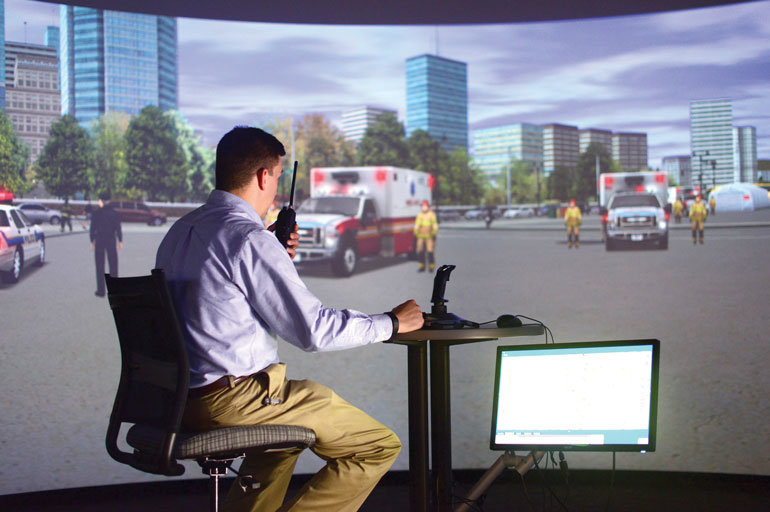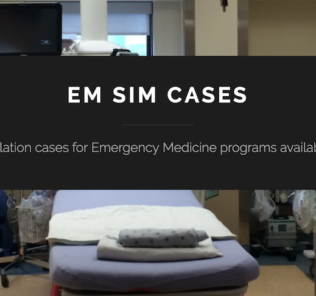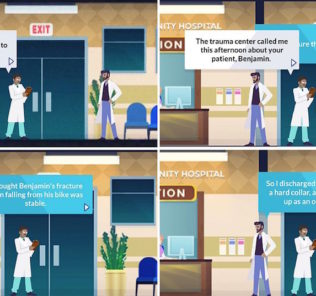Homeland Security Simulation Center Offers Realistic Training for Disaster Preparedness
Utilizing a newly designed self-built simulator, Concordia’s Center for Homeland Security Studies, provides students with a way to learn disaster response scenarios. Learners deal with real world changing environment which includes traffic, wind conditions, fire movement and more.
Excerpt from Disaster Management:
The simulation center, part of Concordia’s Center for Homeland Security Studies, offers specific training on disaster preparedness and response for the university’s students and for outside groups. The centerpiece is the Advanced Disaster Management Simulator virtual reality platform.
Sponsored Content:
During an exercise, the simulator allows first responders to progress through a scene using avatars. Others are down the hall at a command post, receiving information through a computer feed and being interviewed periodically by actors pretending to be reporters.
This strategic messaging piece is critical, said Cliff Gyves, director of the Homeland Security Simulation Center. “We give them a sense of information chaos through our fake newscasts,” he said. “The kids all have phones. You can tell them not to post, but they will, and it’s going to get picked up by the regular media.”
Clients from the local area as well as other states have used the simulator, often at the end of a one- or two-day training session. Although schools wanting to simulate their response to an active shooter are frequent clients, other scenarios involve situations such as a disaster at a large construction site, or a biohazard. The center has a mobile version of the lab that can do smaller simulations too.
“We can take a client’s existing plan, develop a scenario around that, and have them run through the simulation to recognize any gaps,” said Scott Winegar, director of Concordia’s Center for Homeland Security Studies. They can then modify the plan to correct the problems and do a final exercise to see if the modifications worked.
Sponsored Content:
The simulator, which has been operational for about six months, took several months to develop and install. It is currently being used on average at least once a week. For most services that include a simulation — normally formal classroom training with a capstone simulation — the rate is $2,000 for four hours and $3,500 for a full eight-hour day, Gyves said.
Read the full article on the Emergency Management website!
Lance Baily, BA, EMT-B, is the Founder / CEO of HealthySimulation.com, which he started in 2010 while serving as the Director of the Nevada System of Higher Education’s Clinical Simulation Center of Las Vegas. Lance also founded SimGHOSTS.org, the world’s only non-profit organization dedicated to supporting professionals operating healthcare simulation technologies. His co-edited Book: “Comprehensive Healthcare Simulation: Operations, Technology, and Innovative Practice” is cited as a key source for professional certification in the industry. Lance’s background also includes serving as a Simulation Technology Specialist for the LA Community College District, EMS fire fighting, Hollywood movie production, rescue diving, and global travel. He and his wife live with their two brilliant daughters and one crazy dachshund in Las Vegas, Nevada.
Sponsored Content:

















